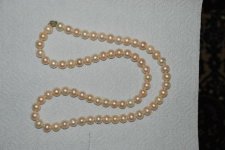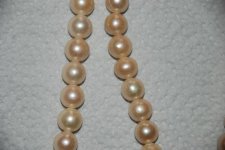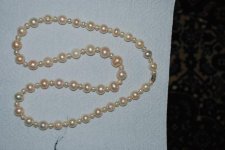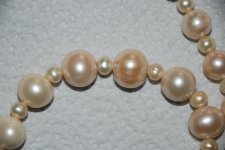aspan
Member
Hello experts, greetings from Saudi Arabia.
I recently acquired two necklaces, claimed to be natural pearls from Basra. Have a look at the pictures. In the first two picures showing the full necklace and a closeup, each pearl is about 11mm and consistently round and good lustre. The second necklace is graded from about 15mm down to about 10mm, not all are perfectly round, and each one is separated by a smaller pearl about 4-5mm.
Can anyone comment from the pictures if these are truely natural and marketd in Basra? Can any lab test for origin and age in addition to testing for natural or cultured and of course its quality in terms of lustre, nacre etc?
I am new to the world of Pearls, but simply love them. Any comments, expert advice etc will be most appreciated.




I recently acquired two necklaces, claimed to be natural pearls from Basra. Have a look at the pictures. In the first two picures showing the full necklace and a closeup, each pearl is about 11mm and consistently round and good lustre. The second necklace is graded from about 15mm down to about 10mm, not all are perfectly round, and each one is separated by a smaller pearl about 4-5mm.
Can anyone comment from the pictures if these are truely natural and marketd in Basra? Can any lab test for origin and age in addition to testing for natural or cultured and of course its quality in terms of lustre, nacre etc?
I am new to the world of Pearls, but simply love them. Any comments, expert advice etc will be most appreciated.




Last edited:
